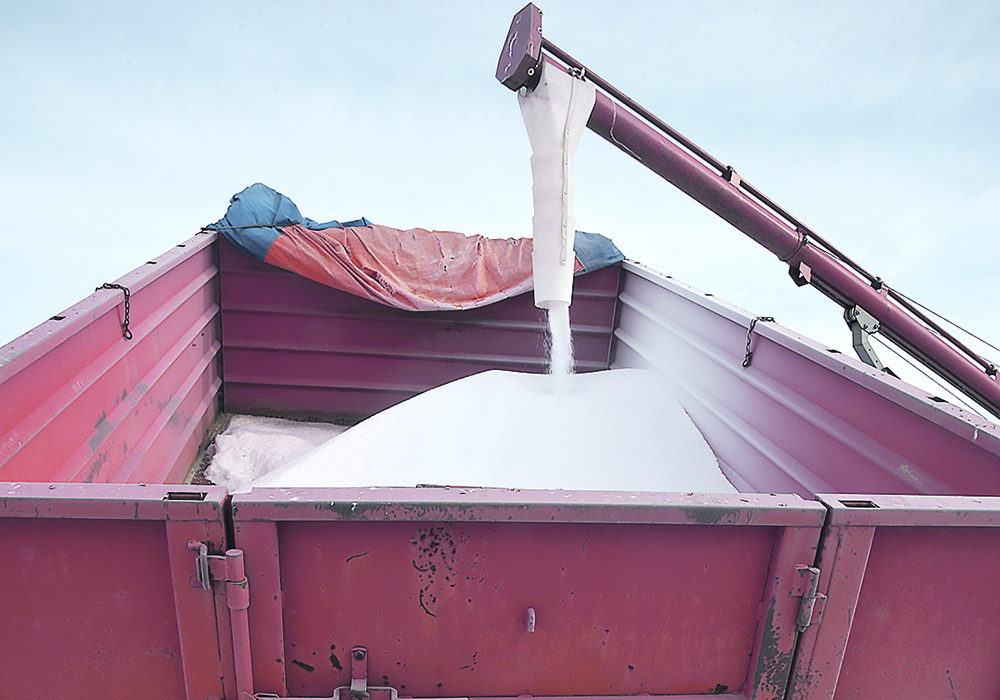Farm Credit Canada expects fertilizer prices to remain under pressure into early 2024.
Prices have been falling since reaching record highs in 2022 as the world faced supply issues following Russia’s invasion of Ukraine.
FCC senior economist Leigh Anderson thinks the recent downward trend will continue for the first part of 2024 and then recover as seeding approaches.
Read Also

Lethbridge Polytechnic receives major donation
Multimillion-dollar donation by Hranac family aids Lethbridge Polytechnic’s research in integrated food production systems, irrigation science and post-harvest technology in Alberta
International fertilizer prices tumbled during the summer months. The decline was not as pronounced in Western Canada because there is not much retail fertilizer activity during that time of year, he said.
He believes there will be a bit of a lag effect here when purchases pick up during the fall and winter months.
Prices will continue to soften due to increased Chinese urea exports and slumping global fertilizer demand, including in Canada.
“The drought in Western Canada and the excessive moisture levels in Eastern Canada will impact fertilizer demand in 2024,” he said in an article he wrote for FCC.
However, fall demand in the United States is expected to be strong, according to a recent CropLife article.
“Price outlooks suggest a revision to more historical levels,” Lance Ruppert, executive director of agronomy marketing & technology for GrowMark, told the publication.
“After two years of the market cheating (application) rates, we expect demand to rebound.”
Jay Boomsma, vice-president of the chemical/fertilizer division at Agri Partners, told CropLife the combination of robust grain prices and much lower fertilizer prices bodes well for fall demand.
“The grain market price is still high enough to make it very profitable for the farmer,” he said.
“It’s one of the best fertilizer-to-corn price ratios we have had.”
Anderson said slowing global economic growth should result in lower diesel prices in 2024.
FCC’s preliminary estimate calls for prices to fall by 2.8 percent in 2024, although Anderson said he is starting to rethink that forecast due to cuts in crude oil production by OPEC+ countries.
“That is probably now maybe reversing our projections if we ran our model today,” he said in an interview following the publication of his FCC article.
Another bullish factor for diesel prices is the unusually low stockpile of U.S. diesel caused by increased exports to the European Union, which is attempting to wean itself off Russian supplies.
Glyphosate and glufosinate prices have tumbled due to a global recovery in production of the farm chemicals and softer demand for the commodities.
“The Canadian market will largely depend on domestic supplies and demand,” Anderson wrote in the FCC article.
He was initially concerned about commercial seed supplies for the 2024 growing season due to this year’s drought.
Those concerns were somewhat alleviated by Statistics Canada’s latest crop production estimates issued Sept. 14, which exceeded expectations.
However, there could still be some seed supply issues in certain parts of the Prairies.
Anderson wonders if retailers and farmers will by clamouring for early maturing varieties due to El Nino, which could bring another hot and dry year in 2024.
Farm revenue will also be an important factor to monitor in the crop input sector.
Canadian crop receipts for the first half of 2023 were up 19.8 percent, driven in a large part by strong sales of canola and wheat.
However, drought reduced Canadian grain, oilseed and pulse production by 13 percent, which could weigh on future crop receipts.
Anderson believes there is enough liquidity in the system to sustain robust crop input sales for the remainder of 2023, but declining revenues could have a negative impact on 2024 purchases.
Contact sean.pratt@producer.com


















